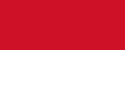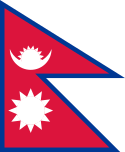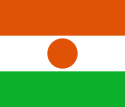Letnie Igrzyska Olimpijskie 1992
 | |
| Stolica igrzysk | |
|---|---|
| Liczba ekip | 173 |
| Liczba sportowców | 9956 |
| Liczba konkurencji | 286 w 32 dyscyplinach |
| Otwarcie | |
| Oficjalne otwarcie | |
| Zamknięcie | |
| Przysięga olimpijska | Luis Doreste Blanco (sportowcy) |
| Znicz olimpijski | Antonio Rebollo |
| Stadion | |
XXV Letnie Igrzyska Olimpijskie (oficjalnie Igrzyska XXV Olimpiady) odbyły się w Barcelonie w 1992 roku. Były to pierwsze igrzyska olimpijskie odbywające się w Hiszpanii.
Po raz pierwszy od wielu lat tej największej imprezy sportowej nie próbowano wykorzystać do celów innych niż sportowe. Historyczne przemiany polityczne, które z początkiem lat dziewięćdziesiątych XX w. nastąpiły w Europie Wschodniej (upadek rządów komunistycznych w państwach tego regionu), zaowocowały odzyskaniem przez niektóre kraje (Litwę, Łotwę, Estonię i Chorwację) suwerenności oraz umożliwiły im start w igrzyskach pod flagami narodowymi. Po zjednoczeniu obu państw niemieckich ponownie wystąpiła reprezentacja jednego kraju – Republika Federalną Niemiec. Sportowcy z byłych republik radzieckich po raz ostatni uczestniczyli jako jedna ekipa (w barwach Wspólnoty Niepodległych Państw), po raz ostatni na igrzyskach wystąpiła też ekipa Czechosłowacji.
Południowa Afryka, która zaprzestała stosowania polityki apartheidu w swoim kraju, powróciła do rodziny olimpijskiej, wystawiając reprezentację mieszaną rasowo.
Z powodu międzynarodowych sankcji na start w igrzyskach nie pozwolono drużynie Jugosławii, MKOl zezwolił jednak, aby pochodzący z Jugosławii sportowcy startowali jako niezależna drużyna.
Ceremonię otwarcia igrzysk obserwowało 65 tysięcy widzów oraz blisko 3 miliardy telewidzów na całym świecie, a w bogatym programie artystycznym wystąpiły m.in. największe sławy muzyki poważnej.
Program igrzysk poszerzony został o trzy nowe dyscypliny: badminton, baseball i judo kobiet. W igrzyskach w Barcelonie masowo brali udział sportowcy, którym do tej pory (ze względu na ich status zawodowca) uniemożliwiono występy na arenach olimpijskich.
Państwa biorące udział w igrzyskach
Na start w igrzyskach nie pozwolono drużynie Jugosławii, jednak jej sportowcy wystąpili pod flagą olimpijską jako niezależna ekipa: ![]() Independent Olympic Participants (IOP; Niezależni Uczestnicy Igrzysk). Na igrzyskach w Barcelonie zadebiutowało 5 krajów: Chorwacja, Słowenia, Bośnia i Hercegowina, Jemen i Namibia.
Independent Olympic Participants (IOP; Niezależni Uczestnicy Igrzysk). Na igrzyskach w Barcelonie zadebiutowało 5 krajów: Chorwacja, Słowenia, Bośnia i Hercegowina, Jemen i Namibia.
 Albania (8)
Albania (8) Algieria (38)
Algieria (38) Andora (8)
Andora (8) Angola (39)
Angola (39) Antigua i Barbuda (13)
Antigua i Barbuda (13) Antyle Holenderskie (4)
Antyle Holenderskie (4) Arabia Saudyjska (9)
Arabia Saudyjska (9) Argentyna (107)
Argentyna (107) Aruba (5)
Aruba (5) Australia (295)
Australia (295) Austria (107)
Austria (107) Bahamy (15)
Bahamy (15) Bahrajn (13)
Bahrajn (13) Bangladesz (6)
Bangladesz (6) Barbados (17)
Barbados (17) Belgia (68)
Belgia (68) Belize (10)
Belize (10) Benin (6)
Benin (6) Bermudy (20)
Bermudy (20) Bhutan (6)
Bhutan (6) Boliwia (14)
Boliwia (14) Bośnia i Hercegowina (10)
Bośnia i Hercegowina (10) Botswana (6)
Botswana (6) Brazylia (195)
Brazylia (195) Brytyjskie Wyspy Dziewicze (4)
Brytyjskie Wyspy Dziewicze (4) Bułgaria (139)
Bułgaria (139) Burkina Faso (4)
Burkina Faso (4) Chile (14)
Chile (14) Chiny (246)
Chiny (246) Chorwacja (41)
Chorwacja (41) Cypr (17)
Cypr (17) Czad (7)
Czad (7) Czechosłowacja (209)
Czechosłowacja (209) Dania (117)
Dania (117) Dominikana (32)
Dominikana (32) Dżibuti (8)
Dżibuti (8) Egipt (83)
Egipt (83) Ekwador (13)
Ekwador (13) Estonia (37)
Estonia (37) Etiopia (23)
Etiopia (23) Fidżi (19)
Fidżi (19) Filipiny (34)
Filipiny (34) Finlandia (89)
Finlandia (89) Francja (376)
Francja (376) Gabon (8)
Gabon (8) Gambia (5)
Gambia (5) Ghana (37)
Ghana (37) Grecja (72)
Grecja (72) Grenada (4)
Grenada (4) Guam (22)
Guam (22) Gujana (6)
Gujana (6) Gwatemala (14)
Gwatemala (14) Gwinea (8)
Gwinea (8) Gwinea Równikowa (7)
Gwinea Równikowa (7) Haiti (7)
Haiti (7) Hiszpania (489)
Hiszpania (489) Holandia (215)
Holandia (215) Honduras (10)
Honduras (10) Hongkong (38)
Hongkong (38) Indie (53)
Indie (53) Indonezja (47)
Indonezja (47) Irak (9)
Irak (9) Iran (40)
Iran (40) Irlandia (58)
Irlandia (58) Islandia (29)
Islandia (29) Izrael (31)
Izrael (31) Jamajka (36)
Jamajka (36) Japonia (272)
Japonia (272) Jemen (13)
Jemen (13) Jordania (7)
Jordania (7) Kajmany (10)
Kajmany (10) Kamerun (11)
Kamerun (11) Kanada (304)
Kanada (304) Katar (31)
Katar (31) Kenia (51)
Kenia (51) Kolumbia (51)
Kolumbia (51) Kongo (7)
Kongo (7) Korea Południowa (244)
Korea Południowa (244) Korea Północna (64)
Korea Północna (64) Kostaryka (16)
Kostaryka (16) Kuba (187)
Kuba (187) Kuwejt (36)
Kuwejt (36) Laos (6)
Laos (6) Lesotho (6)
Lesotho (6) Liban (13)
Liban (13) Libia (6)
Libia (6) Liechtenstein (7)
Liechtenstein (7) Litwa (47)
Litwa (47) Luksemburg (6)
Luksemburg (6) Łotwa (34)
Łotwa (34) Madagaskar (14)
Madagaskar (14) Malawi (4)
Malawi (4) Malediwy (7)
Malediwy (7) Malezja (28)
Malezja (28) Mali (5)
Mali (5) Malta (7)
Malta (7) Maroko (53)
Maroko (53) Mauretania (6)
Mauretania (6) Mauritius (13)
Mauritius (13) Meksyk (134)
Meksyk (134) Mjanma (4)
Mjanma (4) Monako (2)
Monako (2) Mongolia (33)
Mongolia (33) Mozambik (6)
Mozambik (6) Namibia (6)
Namibia (6) Nepal (5)
Nepal (5) Niemcy (486)
Niemcy (486) Niezależni Uczestnicy Igrzysk (58)
Niezależni Uczestnicy Igrzysk (58) Niger (3)
Niger (3) Nigeria (57)
Nigeria (57) Nikaragua (8)
Nikaragua (8) Norwegia (85)
Norwegia (85) Nowa Zelandia (137)
Nowa Zelandia (137) Oman (5)
Oman (5) Pakistan (27)
Pakistan (27) Panama (5)
Panama (5) Papua-Nowa Gwinea (13)
Papua-Nowa Gwinea (13) Paragwaj (30)
Paragwaj (30) Peru (16)
Peru (16) Polska (205)
Polska (205) Portoryko (75)
Portoryko (75) Portugalia (100)
Portugalia (100) Południowa Afryka (94)
Południowa Afryka (94) Republika Środkowoafrykańska (16)
Republika Środkowoafrykańska (16) Rumunia (176)
Rumunia (176) Rwanda (10)
Rwanda (10) Saint Vincent i Grenadyny (6)
Saint Vincent i Grenadyny (6) Salwador (4)
Salwador (4) Samoa (5)
Samoa (5) Samoa Amerykańskie (3)
Samoa Amerykańskie (3) San Marino (17)
San Marino (17) Senegal (21)
Senegal (21) Seszele (11)
Seszele (11) Sierra Leone (11)
Sierra Leone (11) Singapur (14)
Singapur (14) Słowenia (35)
Słowenia (35) Sri Lanka (11)
Sri Lanka (11) Stany Zjednoczone (578)
Stany Zjednoczone (578) Suazi (6)
Suazi (6) Sudan (6)
Sudan (6) Surinam (6)
Surinam (6) Syria (10)
Syria (10) Szwajcaria (114)
Szwajcaria (114) Szwecja (192)
Szwecja (192) Tajlandia (47)
Tajlandia (47) Chińskie Tajpej (37)
Chińskie Tajpej (37) Tanzania (9)
Tanzania (9) Togo (6)
Togo (6) Tonga (5)
Tonga (5) Trynidad i Tobago (7)
Trynidad i Tobago (7) Tunezja (14)
Tunezja (14) Turcja (47)
Turcja (47) Uganda (8)
Uganda (8) Urugwaj (23)
Urugwaj (23) Vanuatu (6)
Vanuatu (6) Wenezuela (37)
Wenezuela (37) Węgry (222)
Węgry (222) Wielka Brytania (376)
Wielka Brytania (376) Wietnam (7)
Wietnam (7) Włochy (323)
Włochy (323) Wspólnota Niepodległych Państw (475)
Wspólnota Niepodległych Państw (475) Wybrzeże Kości Słoniowej (13)
Wybrzeże Kości Słoniowej (13) Wyspy Cooka (2)
Wyspy Cooka (2) Wyspy Dziewicze Stanów Zjednoczonych (24)
Wyspy Dziewicze Stanów Zjednoczonych (24) Wyspy Salomona (1)
Wyspy Salomona (1) Zair (17)
Zair (17) Zambia (9)
Zambia (9) Zimbabwe (19)
Zimbabwe (19) Zjednoczone Emiraty Arabskie (14)
Zjednoczone Emiraty Arabskie (14)
Wyniki
Dyscypliny pokazowe
Statystyka medalowa
W Barcelonie medale zdobyli zawodnicy z 64 krajów. Wśród nich była utworzona po rozpadzie ZSRR reprezentacja 12 nowo powstałych republik – jako Wspólnota Niepodległych Państw, wraz z Gruzją (w WNP od 1993 r.) – osobno startowały Estonia, Litwa i Łotwa (które nie weszły w skład WNP), a także Jugosławia (bez Słowenii i Chorwacji), ostatni raz Czechosłowacja i już zjednoczone Niemcy.
| Klasyfikacja medalowa | |||||
| Lp. | Państwo | złoto | srebro | brąz | razem |
|---|---|---|---|---|---|
| 1 | 45 | 38 | 29 | 112 | |
| 2 | 37 | 34 | 37 | 108 | |
| 3 | 33 | 21 | 28 | 82 | |
| 4 | 16 | 22 | 16 | 54 | |
| 5 | 14 | 6 | 11 | 31 | |
| 6 | 13 | 7 | 2 | 22 | |
| 7 | 12 | 5 | 12 | 29 | |
| 8 | 11 | 12 | 7 | 30 | |
| 9 | 8 | 5 | 16 | 29 | |
| 10 | 7 | 9 | 11 | 27 | |
| ... | ... | ... | ... | ... | ... |
| 19 | 3 | 6 | 10 | 19 | |
| Zobacz pełną klasyfikację medalową | |||||
Maskotka
Maskotką igrzysk w Barcelonie był Cobi, jasnożółty pies zaprojektowany przez hiszpańskiego grafika Javiera Mariscala.
Piosenka
Oficjalną piosenką igrzysk był utwór „Barcelona” Freddiego Mercury’ego i Montserrat Caballé[1].
Przypisy
Media użyte na tej stronie
Olympic Rings without "rims" (gaps between the rings), As used, eg. in the logos of the 2008 and 2016 Olympics. The colour scheme applied here pertains to the 2016 Olympics in Rio de Janeiro.
Olympic Rings without "rims" (gaps between the rings), As used, eg. in the logos of the 2008 and 2016 Olympics. The colour scheme applied here pertains to the 2016 Olympics in Rio de Janeiro.
Autor: https://phabricator.wikimedia.org/diffusion/GOJU/browse/master/AUTHORS.txt, Licencja: MIT
An icon from the OOjs UI MediaWiki lib.
Autor: https://phabricator.wikimedia.org/diffusion/GOJU/browse/master/AUTHORS.txt, Licencja: MIT
An icon from the OOjs UI MediaWiki lib.
Autor: Pedro A. Gracia Fajardo, escudo de Manual de Imagen Institucional de la Administración General del Estado, Licencja: CC0
Flaga Hiszpanii
Olympic Movement flag
Proportions 2:3, created 1913, adopted 1914, first used 1920.
- Colors as per http://fairspielen.de/wp-content/uploads/2015/09/Annexe-3-Olympism_and_the_Olympic_Symbol_-_Principles_and_Usages_Guide-1.pdf
- blue: PMS 3005C
- yellow: PMS 137C
- black: PMS 426C
- green: PMS 355C
- red: PMS 192C
- Dimensions of the rings taken from http://fairspielen.de/wp-content/uploads/2015/09/Annexe-3-Olympism_and_the_Olympic_Symbol_-_Principles_and_Usages_Guide-1.pdf
The flag of Aruba
1910 Flag of Bermuda (with smaller coat of arms)
Łatwo można dodać ramkę naokoło tej grafiki
Łatwo można dodać ramkę naokoło tej grafiki
The flag of the Dominican Republic has a centered white cross that extends to the edges. This emblem is similar to the flag design and shows a bible, a cross of gold and 6 Dominican flags. There are branches of olive and palm around the shield and above on the ribbon is the motto "Dios,Patria!, Libertad" ("God, Country, Freedom") and to amiable freedom. The blue is said to stand for liberty, red for the fire and blood of the independence struggle and the white cross symbolized that God has not forgotten his people. "Republica Dominicana". The Dominican flag was designed by Juan Pablo Duarte, father of the national Independence of Dominican Republic. The first dominican flag was sewn by a young lady named Concepción Bona, who lived across the street of El Baluarte, monument where the patriots gathered to fight for the independence, the night of February 27th, 1844. Concepción Bona was helped by her first cousin María de Jesús Pina.
Flaga Finlandii
The flag of Guam, courtesy an e-mail from the author of xrmap. Modifications by Denelson83.
The Flag of India. The colours are saffron, white and green. The navy blue wheel in the center of the flag has a diameter approximately the width of the white band and is called Ashoka's Dharma Chakra, with 24 spokes (after Ashoka, the Great). Each spoke depicts one hour of the day, portraying the prevalence of righteousness all 24 hours of it.
bendera Indonesia
Flag of Israel. Shows a Magen David (“Shield of David”) between two stripes. The Shield of David is a traditional Jewish symbol. The stripes symbolize a Jewish prayer shawl (tallit).
Flag of Jamaica. “The sunshine, the land is green, and the people are strong and bold” is the symbolism of the colours of the flag. GOLD represents the natural wealth and beauty of sunlight; GREEN represents hope and agricultural resources; BLACK represents the strength and creativity of the people. The original symbolism, however, was "Hardships there are, but the land is green, and the sun shineth", where BLACK represented the hardships being faced.
Variant version of a flag of Japan, used between January 27, 1870 and August 13, 1999 (aspect ratio 7:10).
Flag of Laos
Flag of Liechtenstein
Flag of Maldives. The colours used are Pantone 186 C for red and Pantone 348 C for green.
Flag of Namibia
Please do not replace the simplified code by a version created with Inkscape or another vector graphics editor❗
Flag of New Zealand. Specification: http://www.mch.govt.nz/nzflag/description.html , quoting New Zealand Gazette, 27 June 1902.
Former version of the flag of Paraguay
Flag of Portugal, created by Columbano Bordalo Pinheiro (1857-1929), officially adopted by Portuguese government in June 30th 1911 (in use since about November 1910). Color shades matching the RGB values officially reccomended here. (PMS values should be used for direct ink or textile; CMYK for 4-color offset printing on paper; this is an image for screen display, RGB should be used.)
The proportions of this flag are 3:2; however, there is no official definition for the correct proportions and also 5:3 is widely used.
Flag of Senegal
The flag of Navassa Island is simply the United States flag. It does not have a "local" flag or "unofficial" flag; it is an uninhabited island. The version with a profile view was based on Flags of the World and as a fictional design has no status warranting a place on any Wiki. It was made up by a random person with no connection to the island, it has never flown on the island, and it has never received any sort of recognition or validation by any authority. The person quoted on that page has no authority to bestow a flag, "unofficial" or otherwise, on the island.
Łatwo można dodać ramkę naokoło tej grafiki
The national flag of Kingdom of Thailand since September 2017; there are total of 3 colours:
- Red represents the blood spilt to protect Thailand’s independence and often more simply described as representing the nation.
- White represents the religion of Buddhism, the predominant religion of the nation
- Blue represents the monarchy of the nation, which is recognised as the centre of Thai hearts.
Official flag used by the Fédération Internationale de Football Association (FIFA) to represent Chinese Taipei in association football matches. Also used at the Olympics from 1986 to 2010.
State Flag of Venezuela 1930-2006, New flag was introduced 13 March 2006.
Flag of Italy from 1946 to 2003, when exact colors were specified.
Flag of the Ivory Coast, written by Jon Harald Søby, modified by Zscout370. The colors match to what is reported at http://fotw.vexillum.com/flags/ci.html.
Flag of Tunisia until 1999.
(c) Zscout370 z angielskiej Wikipedii, CC-BY-SA-3.0
Replacement for en:Image:South African Olympic Flag.png.
Autor: Ta ^specifik^ z W3C grafika wektorowa została stworzona za pomocą Inkscape ., Licencja: CC BY-SA 3.0
Flag of Ethiopia, used from 1987 to 1991
(c) Finlay McWalter, CC-BY-SA-3.0
Estadi Olímpic Lluís Companys, the Olympic Stadium on the Montjuïc in Barcelona.
Made by author of Xramp, first uploaded by Denelson83 as Flag of Ecuador.svg, modifications by Husunqu.
Flag of South Korea from 21 February 1984 to October 1997, when the exact colors were specified into their shades. Sources: https://www.britannica.com/topic/flag-of-South-Korea, http://www.christusrex.org/www3/fotw/flags/kr_hist.html, http://fotw.fivestarflags.com/kr_hist.html, http://destinationsouthkorea.weebly.com/flag-history.html http://www.law.go.kr/lsInfoP.do?lsiSeq=51832&ancYd=19840221&ancNo=11361&efYd=19840221&nwJoYnInfo=N&efGubun=Y&chrClsCd=010202#0000.
Autor: Dufo, Licencja: CC BY-SA 3.0
Olympische Sommerspiele 1992 — Anzahl der Athleten
Belize Flag before August 28, 2019 Standardzations SVG from 3 September 2019 revision by FDRMRZUSA
Flag of Zambia before 1996
This is the flag of Bahrain used from 1972 until 2002. The base image is from the 2002 CIA World Factbook (mirrored at UMSL). I have removed the border and recolored the red section according to Image:Flag of Bahrain.svg.
The national and official state flag of Haiti; arms obtained from http://www.webchantier.com/. The civil flag can be found at here.
The former flag of Rwanda (1962-2001). Commonly refered to as the "R" flag.
Flag of Albania (1992-2002)
Flag of Lesotho 1987-2006
Former Iraqi flag, used from 1991 to 2004.
This is the flag of the Cayman Islands, prior to 1999 (It seems this version is still in use). The base pattern is from HK Blue Ensign and the arms are from the blue ensign. The FOTW was used for the position of the arms.
The three stars mean Grand Cayman(76miles), Cayman Brac(14miles), and Little Cayman(10miles).The flag of San Marino, before the 2011 standardization
Flag of Oman from 1970 to 1995
















































































































































































